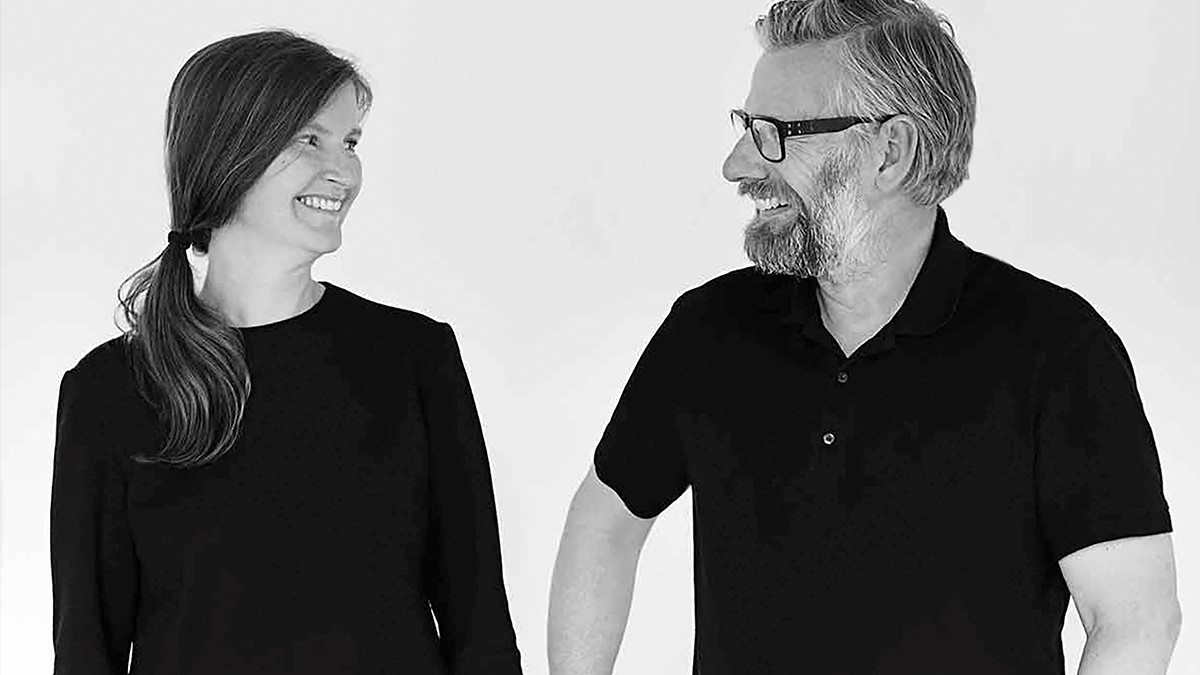Interior designer Anna von Schewen and industrial designer Björn Dahlström are a married couple who work together and apart. For String Furniture they designed the office range Works and extended the String System and String Pocket by creating new parts and clever accessories. Thanks to Anna and Björn, today’s range of String products functions in all sorts of rooms and contexts.
The String shelf system was already an icon when Anna von Schewen and Björn Dahlström began their collaboration with String Furniture in 2011. Kajsa and Nisse Strinning’s shelving started to sell in big numbers more or less immediately after its introduction in 1949. Soon it had found a place in many Swedish homes and was well-known internationally. It’s no exaggeration to say that String is in the DNA of Anna and Björn, who were both born and raised in Sweden. This could easily have instilled a respect of paralysing proportions, but instead they have shown a deep understanding of the heart of the brand.
“Taking on a phenomenon like String there’s a risk of focusing too much on the obvious attributes. In this case, the ‘strings’ of the wall panels,” says Björn. “But if we just developed a lot of products based on a 5-millimetre metal wire, the outcome would feel quite bland.”
Another thing that they realised was the importance of not rushing the creative process.
“Björn and I have an ongoing dialogue about String, and share a true ambition to develop the concept behind the brand,” says Anna. “At the same time, we’ve learned not to lose our focus on quality by continuously creating new things.”
So, what’s the point of a creative approach at all? String is a design classic. Doesn’t it all come down to a timeless style, fulfilling timeless needs?
“String provides storage,” says Anna. “Everybody needs that. But the requirements for storage change over time, so the solutions need to keep up with the times.”
Anna explains how these solutions meet the requirements in different ways – practically, visually, even how it feels to touch the furniture’s surface – but makes it clear that their work is never about just being beautiful. Everything is connected to function and how String can be developed to allow multiple configurations that suit an even wider range of room types.
One of the first designs they created for String Furniture was the folding table for String System. Björn, who is an industrial designer, particularly enjoyed it, since a lot of effort was put into developing the special hinges. An impressive focus on detail which makes the folding table as smart as it is beautiful – in line with the original concept behind String. Now, the shelf could be transformed into a table in no time – a stroke of genius understood by anybody who has tried compact living.
Anna and Björn also accepted an assignment to renew the shelves’ wooden boards, a development that could pave the way for String’s future.
The solution emerged when the designers began experimenting with thin metal boards, giving them punched-out holes and folding up the front edge by 20 millimetres.
“The fold adds stability, and gives a visual similarity to the wooden boards, which are 20 millimetres thick,” says Björn.
The punched-out holes add a light touch, and they open up the possibility of new features: hooks, rods and various accessories that can easily be attached to String.
“The metal boards actually add another key platform to String,” says Anna. “A system within the system.”
A majority of the new accessories are even made out of 5-millimetre metal string, just like the string used for String wall panels since 1949. It’s an elegant way of seamlessly connecting the past to the future.
Even before the addition of Dahlström & von Schewen’s metal shelves and accessories, String Furniture claimed that the String system could be configured in thousands of ways, using all of its elements and colours. With the work of Anna and Björn, the number of possible, personalised configurations has multiplied.
When the designers created the office line Works, they offered a solution to office designers wanting to “disconnect” String System from the walls without spoiling its characteristic lightness and transparency. For example, the stand of the adjustable work table is very slender, compared to traditional desks – a typical feature used through the range.
All this deep engagement in String must have made a big impact. Is it even possible to free yourself from it?
“Yes, both of us are involved in many other projects,” says Björn. “On the other hand, I grew up in a home furnished with String. It was a part of my childhood.”
Anna also has an early connection to String.
“My mother ran her own kindergarten, which she founded long before I was born. It was furnished by Nisse Strinning himself, and his and Kajsa’s children spent their days there. Besides that, my parents owned some of Strinning’s little table sets – simple bases made from steel wire (5-millimetres, mind you!) bent to form a cube, with a top made from painted masonite.”
It feels that Anna von Schewen’s and Björn Dahlström’s collaboration with String Furniture was destined. Who else could have had such unique qualifications?
